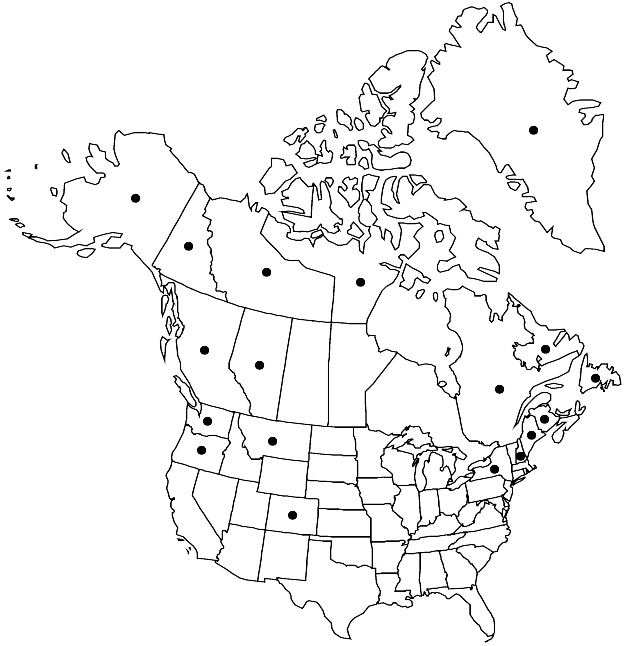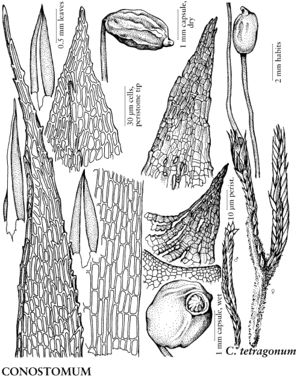Conostomum tetragonum
Öfvers. Kongl. Vetensk.-Akad. Förh. 20: 392. 1863.
Stems brown. Leaves stiffly erect, keeled, 1–1.5 mm; alar cells undifferentiated; basal laminal cells rectangular; distal cells 24–30 × 7–8 µm. Perigonia large, paraphyses subclavate. Perichaetial leaves subulate, base ovate, 2–2.5 mm. Seta yellowish red to brown, 0.8–2.5 cm. Capsule ovoid, slightly asymmetric, 2–2.5 mm, neck short, swollen; operculum obliquely rostrate, beak stout; exostome teeth with border narrow, yellow, connate teeth forming perforated cone. Spores 41–52 µm.
Phenology: Capsules mature Jun–Aug.
Habitat: Thin soil, cliff ledges, among boulders, waterlogged soil of late season snow melt
Elevation: low to high elevations (0-2200 m)
Distribution

Greenland, Alta., B.C., N.B., Nfld. and Labr., N.W.T., Nunavut, Que., Yukon, Alaska, Colo., Maine, Mont., N.H., N.Y., Oreg., Wash., Europe, c, n Asia.
Discussion
Conostomum tetragonum is easily recognized by its glaucous, stiffly erect leaves in five rows and apically connate peristome teeth. Philonotis seriata (known only from Greenland in the flora area), shares a pentastichous leaf arrangement with C. tetragonum, but the laminal cells of P. seriata are prorulose at the proximal ends and the peristome teeth are free.
Selected References
None.
